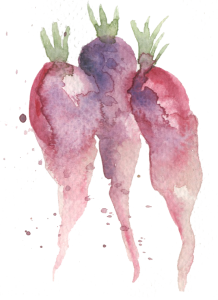Award Winning Author
Face Reading with Before & After Photos
Gluten Free but Still Not Feeling Your Best?
Three Steps to Identify Food Allergies
If you have cut gluten from your diet but still have health complaints, then I have important news for you. Here are three likely reasons that you are still suffering from the various symptoms that eating gluten-containing foods can trigger.
1. For 100% results you must give up gluten 100%. The odds are that while you may have done a great job of passing on pasta, perhaps there’s still an occasional indulgence. Yes, even two pretzels yesterday and one nibble of a cookie today means you’re not gluten free. 
If you have an allergic reaction to gluten and are eating a little now and then, that’s enough to keep your symptoms—as well as your cravings for wheat—going strong. When gluten is toxic for you, then eating even one speck of it causes your body to synthesize immunoglobulins to combat the toxic-to-you substance (antigen). During the immunoglobulin’s three-week lifespan your various symptoms will be troubling you. While bloating is a common symptom, others may include headaches, autism, weight problems, bowel problems, acid indigestion, arthritis, digestive irregularities, skin problems and more.
2. Perhaps gluten is a hidden ingredient in a favorite food. To successfully go gluten free you simply must read the ingredients label of every food, supplement and beverage that you consume. Check online for comprehensive lists of gluten-containing products.
3. Perhaps you have additional sensitivities. If you’ve rigorously accomplished the above and are still not feeling yourself, the odds are that you are consuming an additional allergen.
If you strongly crave any food, it may be an allergen. Especially if you eat it often and have chronic health complaints. For example, in India where chickpeas are a staple, they are a more common allergen there than in the West. In addition to gluten, our common allergens include:
- Dairy
- Eggs
- Nuts (including coconut)
- Seeds (including their butters and oils: flax, pumpkin, sesame and sunflower)
- Grains: corn, rice, quinoa, oats, amaranth, buckwheat, millet, tef and wild rice
- Fish
If one of these less common allergens, like quinoa, for example, is something you rarely eat and don’t strongly crave, it’s unlikely to be a problem food for you. But, for example, if corn is a staple, if you really love it and if you suffer from allergic symptoms, then corn is suspect.
May you be well nourished,
Rebecca Wood


Hi Rebecca,
Thanks so much for this! I felt much better when I cut gluten out of my diet, but even still, I found out later that I have other sensitivities. The most difficult one is corn, which is even more pervasive in our food supply (and pretty much every product in the US) than gluten, to the point where I do not eat out anymore and make 90% of what I eat from scratch (after spending hours/days researching ingredients). I was surprised to learn that corn can be hidden in almost everything – from the vitamins used to fortify milk to a light dusting of corn starch on plastic food packaging to a huge list of food/beauty product additives that can be derived from corn. The silver lining to all of it is that I am now much more aware of what I put in and on my body than I have ever been, and I am eating healthier than ever. I have also met a number of people online who are sensitive to both corn and gluten, and the online community is amazing.
Regards,
Pam
Thanks, Pam. Yes if you’re sensitive to gluten the odds seem to be increasing that you’ll be sensitive to other grains as well.
Corn may be a staple for many people who do not realize it, as corn derivatives are used in so many processed foods, household products, and medicines. Iodized salt contains added corn dextrose, white vinegar is made from corn, and of course corn syrup is in everythg from cereal to tomato sauce. Even cheese can be coated with cornstarch before packaging, not to mention toiletries, soaps, and fragrances all usually contain corn in some form. Citric acid and xanthan gum from corn appear in almost all supermarket foods, corn wax and gas are used on fresh produce, and organic does not mean no corn. No wonder there is a growing number of people discovering corn allergy in themselves and their children. Corn allergy does not follow the rule that protein must be present in order to cause an allergic reaction, especially since the introduction of GMO corn into our food supply. I am glad to see you mentioning corn as a potential allergen, and wanted to add just how ubiquitous corn is in case people want to try avoiding it and see whether their symptoms improve.